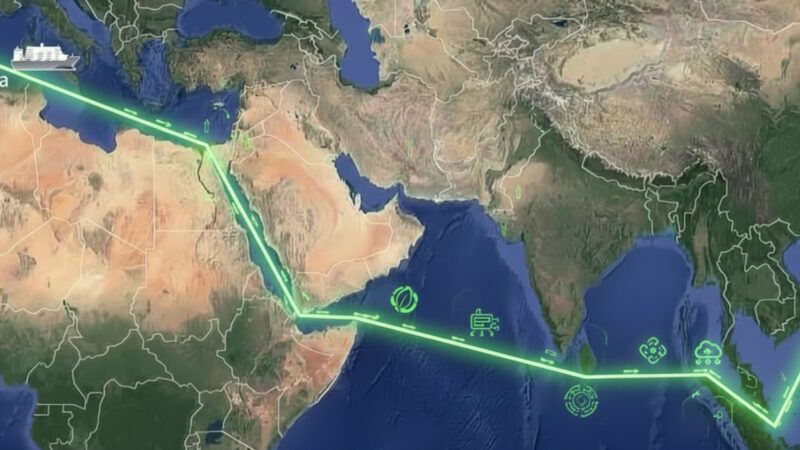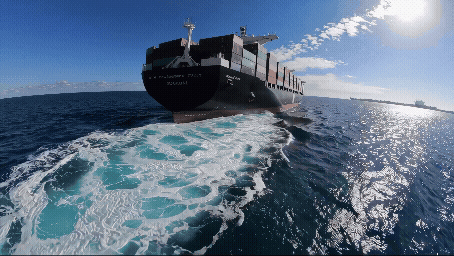 The Port of Barcelona's study is pioneering because no other benchmarks have analysed and quantified the impact of digitalisation in the sector. (Getty Images)
The Port of Barcelona's study is pioneering because no other benchmarks have analysed and quantified the impact of digitalisation in the sector. (Getty Images)
The Port of Barcelona analyses the impact of digitalisation in a pioneering study
Can the impact of digitalisation be quantified? The answer is yes. The study prepared by the Port of Barcelona's Market Analysis and Intelligence Department, in collaboration with the economic consultancy firm Ecoatenea, is the first to portray, with specific figures, the consequences of digitisation on the Port and its entire Port Community.
 The Port of Barcelona's study is pioneering because no other benchmarks have analysed and quantified the impact of digitalisation in the sector. (Getty Images)
The Port of Barcelona's study is pioneering because no other benchmarks have analysed and quantified the impact of digitalisation in the sector. (Getty Images)
For the first time, the Port of Barcelona presents a study, in collaboration with Ecoatenea, that quantifies the impact generated by digitalisation in the port and its community. Entitled 'Economic impact of the commercial activity and digitalisation of the Port of Barcelona', the report leaves no doubt about how the digital dimension generates social, economic and environmental value, in a pioneering study in the sector.
“It is innovative for several reasons. One of them is that we have not found any precedents for companies or a specific productive sector that have assessed the impact of their digitalisation, so methodologically we started from scratch," explains Maria Dolors Lloveras, head of market analysis and intelligence at the Port of Barcelona.
On the other hand, both the Port Authority and the companies of the Port Community have spent years focusing their efforts investing in telematization, automation or digital services to consolidate a more productive, more sustainable, more competitive port model with greater growth capacity. “All this work had to be valued to demonstrate the true benefits of digitalisation,” she adds.

Digitalisation increases productivity
According to the data obtained, digitalisation significantly improves productivity in port management and operations processes. This improvement translates into:
- Direct annual savings of €450 million per year for the Port Community.
This cost saving is notably higher than the expenses and investments allocated by companies to digitalisation , estimated at €52.6 million on average per year.
“63% of these savings comes from the telematization of documentary processes. This reaffirms the Port's commitment to create "a paperless port", which was the embryo of the first "Port Community System" in a Spain port. Telematization represents a reduction in time value of 10 million hours a year, in addition to improving the transparency and legal certainty of relationships with our customers and suppliers,” Lloveras assesses.
- A reduction in employment needs of 2,704 jobs.
In the short term, digitalisation "saves work" but in the long term, it generates an increase in commercial activity and sales volumes. This has led to an increase in employment estimated at 2,564 jobs, which represents 16% of the direct employment of the Port.
“Digitalisation allows Barcelona to be a more competitive port, thanks to cost savings and increased productivity. These benefits mean that, over the years, the commercial activity of the port has increased and, consequently, also the demand for employment. In addition, this occupancy is of greater capacity and quality,” she explains.

Digitalising encourages decarbonization
The study assesses how the Port’s digitalisation contributes to decarbonising the Catalan economy. If we talk about the direct effect, it has led to a reduction in polluting emissions estimated at 781.7 tons and a reduction in the carbon footprint of 38,629 tons of CO2 eq, savings that represent 13% and 12% of the total emissions emitted by the Port’s activity.
"The Port of Barcelona is considered a strategic sector for the industrial and commercial industries. Any improvement in the efficiency of its services is transferred to its customers, importers and exporters' supply chain," she explains.
Thanks to digitalisation, the loading/unloading operations of ships are carried out faster, trucks spend less time in the port and companies have reduced the number of trips for their procedures. "Ultimately, the speed of services has improved, producing a considerable reduction in emissions," she adds.
However, as Lloveras continues, it was still necessary to learn about the impact of this environmental efficiency in relation to the Catalan economy. “And this is where the applied methodology has been innovative, since we started from the Industry GHG emissions data for Catalonia from the emissions inventory of the Ministry of Ecological Transition. We crossed them with those obtained by the Catalan Input-Output Table, incorporating the Port as its own sector to model the impact of carbon footprint reduction on the Catalan economy,” Lloveras details .
In the case of trucks, for example, the implementation of automatic doors or virtual gates has reduced access time by 37%. The automation of customs exits with the implementation of the Integrated Customs Control System (SICAD) reduces departure times by 15%.
Both measures save €2.4 million in fuel, 23 tons of polluting emissions and 6,978 tons of CO2.
With regards to vessel operations, the improvements introduced in the computerized management systems of all the operations in the container terminals (TOS) have reduced the berthing time by 2.2 million minutes, equivalent to 4.2 years, and savings of 40% in the emissions of each container.
While the investment in digitalisation was €52.6 M on average, the direct annual savings derived from digitalisation was €450 M
Digitalisation generates added value
Digitalisation has also been assessed from a qualitative perspective, that is, how the decisions to invest in new digital projects has helped companies climb positions in the creation of value, both for their employees, customers and shareholders, and for the benefits that they transfer to the economy and society in general.
The aspects most valued by Port companies are greater transparency and reliability with customers, greater operational efficiency and productivity, as well as greater innovative capacity for the creation of new digital services.
Reputation towards customers is another of the most valued indicators, followed by reputation towards employees, who perceive the advances in digitalisation as an improvement in their skills, performance and work-life balance.
Companies value the following as key aspects of digitalisation: the digital skills of employees and managers; the evolution of technology, and the reduction of costs/time that it entails. In this sense, the improvement of productivity is the main benefit of digitalisation.

The methodology used in the report
The direct impact of digitalisation has been quantified through a specific questionnaire addressed to the Port Community.
Its preparation has been possible thanks to the contributions from the focus group sessions held with representative companies of different profiles and services: bulk, ro-ro, container and multi-purpose terminals; Consignees, freight forwarders, customs agents, road transport, Customs, PIF services, pilots, tugboats, mooring, Estibarna, PortIC, and the Barcelona Port Authority.
To complement it, a sample of 126 representative companies of the Port Community was drawn up. The degree of participation was 25%.
Lloveras explains that the focus groups were important to identify a series of indicators that made it possible to measure the results obtained. “Thanks to these focus groups, we obtained the foundations to undertake the second phase of the field work and the most laborious, since it was about collecting these indicators according to the processes and operations where the companies had implemented digitalisation. This collaboration was crucial, as was their involvement.”
The indicators analyzed cover the years 2006 to 2018. “The preparation of this type of study is usually long-term, normally one year, especially in big ports where there are a large number of companies operating. In addition, the pandemic meant that companies had other priorities to solve,” she shares.
Lloveras ensures that the proven benefits, if the given level of digitalisation of 2018, will occur annually. “The methodology used identifies the costs and time necessary to carry out the usual activity of companies in the current digitalisation scenario and in a hypothetical non digitalised scenario. In this sense, if the level of digitalisation does not vary, the quantified benefits –mainly cost and emission reductions- would be the same year after year,” she assures.
This groundbreaking study shows that investing in digitalisation brings multiple quantifiable benefits. And this has only just begun.






